Trekking, as the dictionary defines it, is to go on a long arduous journey, typically on foot. Sounds quite daunting but yet don’t we quite love it! We hike, tramp, march, slog, trudge or plain old walk. Sometimes to discover or to simply to get away from the mundane. It works like magic for most.
Want to pummel the stress from that crappy old job or a sucky relationship?
Trek!Your new year resolution to stay fit could not make it past the first week. Does the guilt burden you? Do you loathe yourself for becoming a couch potato?
Trek!Do you love nature in its rawness, the serenity, the views?
Trek!
Have you wanted to go on a trek in the mountains since long, to see those snow-covered peaks whose images you have been scrolling through until now, up-close? Have you always wanted to actually walk through the beautiful green meadows and not just be satisfied with their photos? Have you been unsure about taking that first step toward preparing yourself for your first trek?
Worry no more, we will help you with a step-by-step Beginner’s guide for Trekking in India which will prepare you for your first trek to the magical mountains.
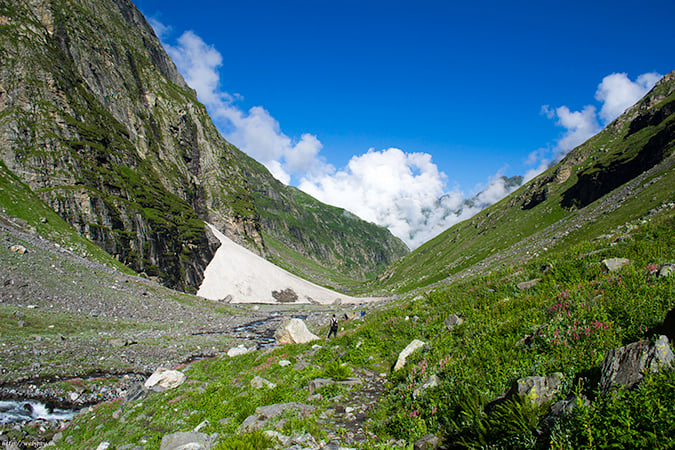
Beautiful mountains (Source)
Even though to trek anywhere all you need to do is walk, a trek is nothing like your usual walk in the park or a morning stroll. Walking at high altitude is a totally different ball-game; depending upon the length you plan to go up-to, adequate preparation is the most important thing. The length of the trek is another important factor to be kept in mind.
Keep in mind the following things, and you should be good to go for trekking in India:
1) Types of Treks in India
‘Trek’ is a very generic word and talking of types of trek, treks can be be anything from an easy one to a moderate one or one that can be hard a one.
Easy trek: Generally a trek stretching for about a couple days and with a decent terrain not involving much highs and lows is considered an easy trek. An easy trek generally involves a not-so-stressing walk of 4-5 kilometers daily. A good example of an easy trek is the Naag Tibba trek, which is a short and beautiful trek that can be done in 2.5 days with a night of camping.
Moderate Trek: A trek which involves crossing terrain which need a certain level of stamina, involve multiple days of walk in tougher conditions that pose a higher degree of challenge to the trekker and involves 5-6 hours of walking in a day can be considered to be a moderate trek. The Hampta Pass trek in the Pir Panjal range is one that can be considered a good example of a moderate trek.
Hard Trek: A trek that demands walking long hours per day through steep inclines and deep gorges. A trek where only stamina is not enough and mental strength is of utmost importance. A trek that involves ascending to altitudes above 14,000 feet ASL and stretches to a week or more is generally considered a hard trek. One that tests many aspects of the trekker, not just his ability to walk. The trek to the Everest Base Camp which reaches up-to a height of more than 17, 500 feet is one such trek.
2) Places for trekking in India
Being born in India is one of the best things that could have happened to you if you like trekking. The number and variety of treks that our beautiful country has to offer are second to none. Be it the lush-green Sahyadris or the almost un-explored Himalayas in North-East India or the High Himalayas up north, there’s a vast range of options to trek, explore and get lost in the mountains. If the Himalayas in the North are for rugged terrain and snow-capped peaks, we should not forget the lush green Nilgiris down south. The Nilgiris too have a lot of nice small treks which will keep you busy and happy in the weekends.
3) Training yourself for Trekking in India
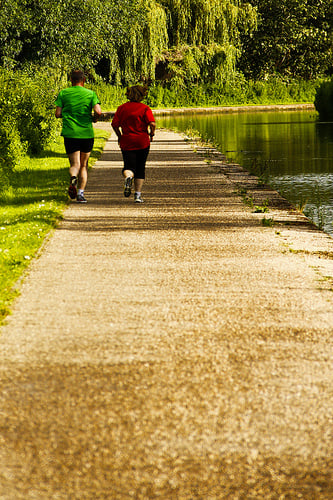
Jogging (Source)
Build stamina: Make your legs strong. Start brisk morning walks followed by jogging at least a month before the start of your trek. If you are regular at the gym, do more cardio exercises. Along-with the walks, walking with a back-pack weighing similar to the weight you plan to carry on your trek helps.
Stop smoking: Smoking and high-altitude does not go hand in hand. When in the high mountains, you would want your lung to perform at 100%. As you go up, the oxygen in the air goes down so the more air you suck-in, the better your body will perform. So if you smoke, STOP now. I promise you a trek is much more worth than smoking.
To be fit enough to go on a trek at short notice, make the following part of your daily routine:
- Walk for 5-6 kilometers regularly
- Try and finish ~ 1.5 kms in around 20 minutes
- Post the walk, go for a jog
- Do squats
- Stand on one leg at a time & try to be straight for half a minute on each
- Do breathing exercises – inhale/exhale and chest-expansion exercises
- Do basic shoulder and back exercises to make them strong
4) Some tips for Trekkers in India
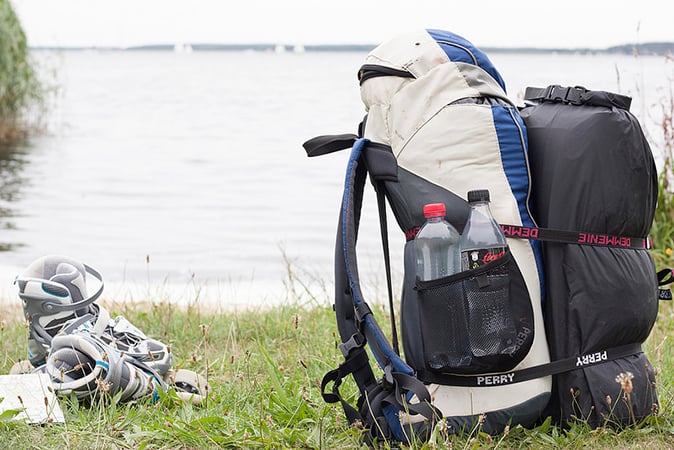
Pack smartly (Source)
When you’re on the trail, these hacks might help you manage yourself well -
- Distribute load among team members
- Carry a stick – helps in walking. Also, carry a length of sturdy rope as it helps in tricky situations
- Drink water in small quantities at regular intervals, and remember to wet your lips
- Keep sucking on candies and lozenges (reduces thirst)
- You may carry Frisbee/Football to enjoy a game at your camping spot
- Boardgames + books + card games
Pack light: Don’t pack everything you can think of when going for a trek. Remember, you are going to the mountains where you would not want to (neither you will have time to) shower daily so there is no point taking 5 pairs of denims and another 5 pairs of your favorite tees. A couple of pairs would be more than enough. Take couple of quick-dry clothes instead of denims and cotton tees.
Take layered clothing: The weather in the mountains is always unpredictable. It can go from cold to extremely cold to pleasant and back to cold in minutes. If you are walking, you will feel the change even more. So, to be comfortable according to the mood of the weather, the smart way to dress is in layers. Pack two extra light and thin fleece jackets instead of your thick and heavy coat/jacket. Also, when in the mountains never forget your rain coat.
Good and well-broken trekking shoes: Get the best and most comfortable pair you can afford. Ankle-support is very important, so ensure you have that in the pair you pick. Before actually heading to trek, break the shoes as much as you can by wearing them regularly. Trekking with a shoe-bite is no fun.
It’s not a race: Remember, you are on a trek because you wanted to see, experience and be one with nature and not because you wanted to finish it before anyone else. Walk at the pace you are comfortable with, and never try to push yourself too much. You will end up doing more bad than good to yourself.
Don’t litter: The ecosystem up there is very fragile, and our responsibility is to keep it clean and pure, just as Mother Nature has made it. So make sure you don’t litter the place, bring all your garbage back to the plains, and dispose of it in the correct places. Also, if you find any wrappers, plastic, or anything that should not be there, pick it up and bring it back to the plains for proper disposal.
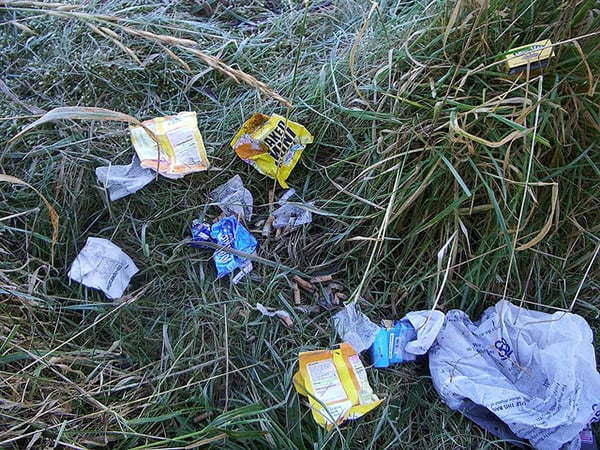
Don’t Litter (Source)
Keep re-fueling: Walking at high altitude is demanding, dehydrating and de-energizing us quickly. Hence, it is important to keep drinking lots of water and eating high-energy food as frequently as possible. Chocolates, candies, and dry fruits are great options to keep you going.
If you think mere treks are insufficient and are ready to take them to the next level, you can always go for Basic (and then Advanced) mountaineering courses.
5) Trekking Institutes in India
Himalayan Mountaineering Institute (HMI, Darjeeling): Located in the mountains of Darjeeling, the Himalayan Mountaineering Institute is one of the premier institutes in India and was established way back in 1954 when Sherpa Tenzing Norgay’s ascent to the mighty Mt. Everest sparked the interest of the youth in mountaineering. The institute conducts a variety of courses in the field of mountaineering, starting from Basic Mountaineering Course to Advanced courses. The HMI conducts adventure courses for visually handicapped personnel as well.
Nehru Institute of Mountaineering (NIM, Uttarkashi): Rated as one of the best mountaineering institutes in the country and considered the most reputed mountaineering institute in Asia, the Nehru Institute of Mountaineering (NIM) located at Dehradoon also provides various mountaineering courses. Besides conducting Basic and Advanced courses, the NIM also conducts special courses on search and rescue.
Atal Bihari Vajpayee Institute of Mountaineering and Allied Sports (ABVIMAS, Manali): Located on the banks of the river Beas, the ABVIMAS is the country’s largest Adventure Sports training center. It boasts of training more than 40,000 people at its facility, including its nine sub-centers spread across Himachal Pradesh. Like NIM and HMI, it also provides Basic Mountaineering course along with many other adventure courses in the field of still water sports, white water sports and snow-skiing.
6) Choose an easy trek:
Being on your first trek implies that you are unaware of how your body will behave at an altitude much higher than it is used to so, always choose a trek wherein the ascent is gradual and you will not have to walk long hours. A trek which takes you to a maximum altitude of 13, 500 to 14, 000 feet should be your trek of choice the first time. The trek you choose should not involve walking more than 7-8 kms a day. As experienced trekkers rightly say, ‘One kilometer in the mountains is more than 3 in the plains’. Do your math now.
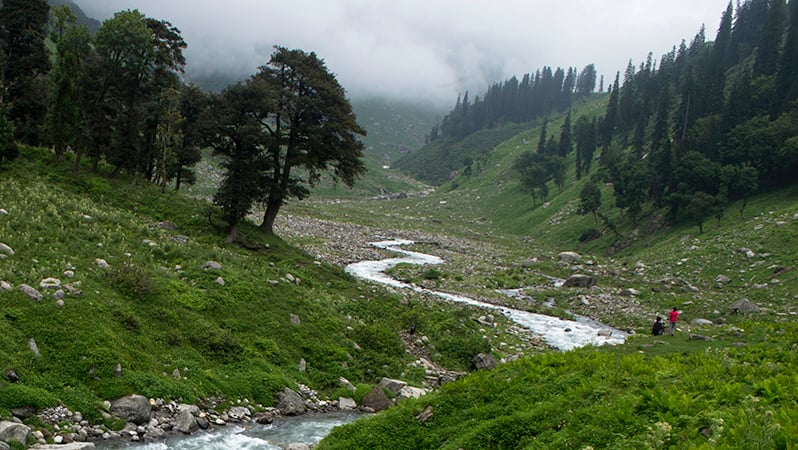
An easy trek (Source)
7) Whom to go with?
Please inform your trek agency/group about this being your first time; they are fine with it, and their team is well-trained (most trek agencies are). Try going through some reviews before finalizing on any operator. Alternatively, you can go alone in a group if the trek is easy with a well-beaten path. You may save on costs by hiring a local guide instead of a trekking agency.
8) Books to Read (For that extra inspiration)
- Trek the Sahyadris – Harish Kapadia
- Into Thin Air – Jon Krakauer
- Wonders of the Himalayas – Sir Francis Younghusband
- Trekking in the Indian Himalayas – Lonely Planet
- Paths of Glory – Jeffrey Archer
9) What to carry on a Trek?
We understand that trekking could be arduous, and it’ll be not easy to assemble a list of things you may need. Don’t worry; we have you covered!
- Good rucksack, preferably with back support
- Tent for sleepovers in the outdoors (should be light and sturdy). Quechua T3+ is a good option depending on budget and convenience.
- Sleeping bag (temp range depending on terrain)/ bedsheet + Sleeping mattress
- Good quality trekking shoes (e.g. Quechua Forclaz) + slippers (you can’t walk around in shoes all the time, especially when you camp)
- Full track pants (safety from insects, weed and bruises)+ cotton t-shirts (extra pair) + socks + cap/hat + Jacket
- Wear knee caps /ankle support if you are in for a long hike
- Flashlight (LED – as they are durable, lightweight, and cheap) + extra batteries
- Camera/cellphone and associated peripherals
- A length of sturdy rope+ a knife/ a Swiss knife
- Sunglasses + sunscreen + deodorant (trek=sweat=odour; also helps in starting a bonfire) + toothpaste & brush/ mouthwash
- Water bottle (2 ltrs) or water bladder with a sipper (hydration pack)
- Sanitizer + tissue roll/old newspaper + plastic bags (for storage of used items/waste etc)
- Marker/chalk + whistle/walkie talkie + compass
- Extra cash
10) Take your medicines:
Along with basic clothes, dry-fruits, and toiletries, don’t forget to take medicines for common ailments.
- Personal essential medicines, if any
- Antiseptic liquid + ointment + band aids + medical bandage + cotton + gauze pads
- Paracetamol + Cetrizine + cold-n-flu + Digene/Pudin Hara/Eno
- Diamox for high altitude climb (It’s a no-no for people who are allergic to sulphur)
- Chlorine tablets for purification if you are not carrying sufficient water or there won’t be mountain water streams where you plan to go. Buy a LifeStraw for such terrains and drink water from ponds, puddles etc.
- Moov/Volini spray
11) Food to be carried:
Since you will be out of reach of fancy restaurants and mostly have to survive on your grub, you should carry stuff that will help kill those hunger pangs after long stretches. Make sure these food items have a long shelf life and are wholesome.
- Chocolates (preferably with wafers-filling) + energy bars + plum cakes or similar
- Candies for munching on the way
- Glucon-D/Tang + Milk tetra pack + juices
- Bread + cheese spread + aloo bhujiya + ketchup -> Killer combo
- Jam + biscuits + Dry fruits/other munchies (hills)
- Paper dishes and cups
Remember that you must carry all these items, so always pack light and only the most important stuff. For instance, if you have to carry toiletries, always keep a small quantity that will suffice for the trek. The same goes for other perishable items as well.
12) Ask questions:
If you have any questions, however insignificant they may seem, don’t hesitate to ask your trek operator. Ask them until you are satisfied with the answers.
Just keep these simple things in mind and follow them, and you are sure to have a wonderful experience.
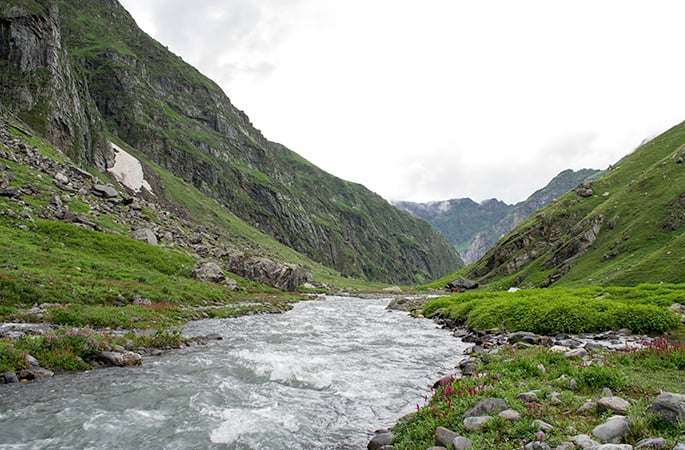
The Rani River (Source)
Now that you have all the information you need, what are you waiting for? Think no further and take this Beginner’s Guide for Trekkers as a starting point towards your first step into the world of trekking and head to the mountains!
